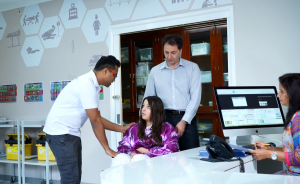Statistic of the Week: Which Nursing Skills are Most Important

The Australian Government Department of Employment cites US department of labor statistics (2015) showing that, based on their research methodology, the nursing skill allocated the highest importance by study participants (85% importance) was social perceptiveness. Active listening (80% importance) and critical thinking (75% importance) also rated very highly. While medical knowledge topped the list of forms of knowledge required, it was closely followed by more inter-personally focused forms of knowledge including psychology and customer service.
Why is it important?
The department defined social perceptiveness as a combination of awareness of others’ reactions and the ability to understand the reasons for them. Then I asked Natasha Carfi (Registered Nurse, Lead Educator) about the importance of teaching her Diploma of Nursing students about social perceptiveness, she replied emphatically, “nurses need to understand not only the reactions of their patients or clients, but also those of their families. You need to dig deeper than just the words they are saying and work out what is going on through nonverbal cues. Once you suspect the patient has an undisclosed problem, you can often help them to make a disclosure with the right communication. Nurses are among the most trusted professions”. She also mentioned active listening as an important component of the communication units.
Is it being taught in nursing courses?
The Diploma of Nursing – a course that leads to registration as an Enrolled Nurse (Division 2) – includes units of study that are specially about how to communicate effectively and recognise nonverbal cues. Ms Carfi teaches her students through blended learning, so theory components of the course are taught online and then followed up on campus in the simulation laboratories and in practical work placements. Simulation activities include demonstrating not only the medical skills but also the communication that accompanies the situations in which they are applied. A major component of the course is patient assessment, which involves identifying not only a patient’s medical needs but also their psychosocial needs. Even those studying toward an entry level qualification such as a Certificate III in Individual Support (Aging, Disability) undertake the unit CHCCOM005 – ‘Communicate and work in health or community services’ as a core unit of study, which shows just how high a priority communication is in any caring role, but all the more so in a complex one such as that of a nurse.
Author: Mr David N. Webb
References
Department of Employment 2012, Job outlook, viewed 13 January 2016, <http://joboutlook.gov.au/occupation.aspx?search=alpha&tab=skills&cluster=&code=2544>
O*Net Online 2015, Summary Report for: 29-1141.00 – Registered Nurses, viewed 13 January 2016, <http://www.onetonline.org/link/summary/29-1141.00>slot gacorslot gacorslot online
